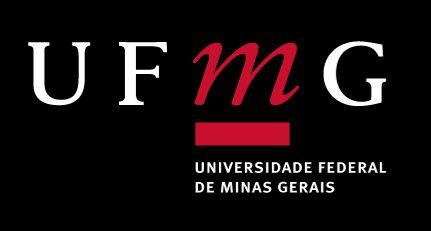Non-institutional cartographies of COVID-19
mapping the novel coronavirus outbreak in Belo Horizonte (Brazil)
DOI:
https://doi.org/10.35699/2237-549X.2020.24859Keywords:
COVID-19, pandemic, GIS, spatial analysis, inequalitiesAbstract
This article aims at highlighting the relevance of the use of GIS and spatial analysis to grasp the spatiotemporal dynamics of COVID-19 in urban settings. It provides on how the development of non-institutional cartographies in Brazil has contributed to a better understanding of the coronavirus outbreak ata local level. The discussion emphasizes the importance of identifying vulnerable populations in order to implement local strategies to effectively combat the pandemic. We demonstrate how the experience of developing an interactive platform to map COVID-19 cases in Belo Horizonte has contributed to filling some gaps left by the municipal administration, providing a more comprehensive and detailed analysis of the outbreak.
Downloads
References
ACUTO, M. COVID-19: Lessons for an Urban(izing) World. One Earth, v. 2, n. 4, p. 317–319, 24 abr. 2020.
ALVES, T. H. E. et al. Underreporting of death by COVID-19 in Brazil’s second most populous state. medRxiv, p. 2020.05.20.20108415, 23 maio 2020. Disponível em: https://www.medrxiv.org/content/10.1101/2020.05.20.20108415v1. Acesso em: 10 de agosto de 2020.
BRENNER, N. Implosions/Explosions. Towards a Study of Planetary Urbanization. Berlin: Jovis, 2014.
CARRIÓN, D. et al. Assessing capacity to social distance and neighborhood-level health disparities during the COVID-19 pandemic. medRxiv, 13 jun. 2020. Disponível em: https://www.ncbi.nlm.nih.gov/pmc/articles/PMC7302284/. Acesso em: 10 de agosto de 2020.
CHUNG, C. K. L.; XU, J.; ZHANG, M. Geographies of Covid-19: how space and virus shape each other. Asian Geographer, v. 37, n. 2, p. 99–116, 2 jul. 2020.
CONNOLLY, C.; KEIL, R.; ALI, S. H. Extended urbanisation and the spatialities of infectious disease: Demographic change, infrastructure and governance: Urban Studies, 31 mar. 2020.
CORDES, J.; CASTRO, M. C. Spatial analysis of COVID-19 clusters and contextual factors in New York City. Spatial and Spatio-temporal Epidemiology, v. 34, p. 100355, 1 ago. 2020. DONG,E.; DU, H.; GARDNER, L. An interactive web-based dashboard to track COVID-19 in real time. The Lancet Infectious Diseases, v. 20, n. 5, p. 533–534, 1 maio 2020.
O, I. et al. Spatial analysis and GIS in the study of COVID-19. A review. Science of The Total Environment, v. 739, p. 140033, 15 out. 2020.
FRANCH-PARDO, I. et al. Spatial analysis and GIS in the study of COVID-19. A review. Science of The Total Environment, v. 739, p. 140033, 15 out. 2020.
GIBSON, L.; RUSH, D. Novel Coronavirus in Cape Town Informal Settlements: Feasibility of Using InformalDwelling Outlines to Identify High Risk Areas for COVID-19 Transmission From A Social Distancing Perspective. JMIR Public Health and Surveillance, v. 6, n. 2, p. e18844, 2020.
LIU, L. Emerging study on the transmission of the Novel Coronavirus (COVID-19)from urban perspective: Evidence from China. Cities, v. 103, p. 102759, 1 ago. 2020.
MARINO, A. Cartografias da pandemia A utilização de mapas no combate à Covid-19 abre brechas para práticas de controle. Quatro Cinco Um, n. 33, 2020. Disponível em: https://www.quatrocincoum.com.br/br/artigos/a/cartografias-da-pandemia. Acesso em: 10 de agosto de 2020.
MERICSKAY, B.; ROCHE, S. Cartographie 2.0 : le grand public, producteur de contenus et de savoirs géographiques avec le web 2.0. Cybergeo : European Journal of Geography, 20 out. 2011. Disponível em: https://journals.openedition.org/cybergeo/24710. Acesso em: 10 de agosto de 2020.MOCNIK, F.-B. et al. Epidemics and pandemics in maps –the case of COVID-19. Journal of Maps, v. 16, n. 1, p. 144–152, 1 jan. 2020.
MOONEY, P.; JUHÁSZ, L. Mapping COVID-19: How web-based maps contribute to the infodemic. Dialoguesin Human Geography, v. 10, n. 2, p. 265–270, 1 jul. 2020.
PASTERNAK, S.; D’OTTAVIANO, C.; LUPPI BARBON, Â. Mortalidade por COVID-19 em São Paulo: ainda rumo à periferia do município. Disponível em: https://www.observatoriodasmetropoles.net.br/mortalidade-por-covid-19-em-sao-paulo-ainda-rumo-a-periferia-do-municipio. Acesso em: 23 jul. 2020.
PEREIRA, R. H. M. et al. Mobilidade urbana e o acesso ao sistema único de saúde para casos suspeitos e graves de covid-19 nas vinte maiores cidades do brasil. Brasília: IPEA, 2020. ROLNIK, R. et al. Mapas do coronavírus escondem informações. Disponível em: http://www.labcidade.fau.usp.br/mapas-do-coronavirus-escondem-informacoes. Acesso em: 21 jul. 2020a. ROLNIK, R. et al. Circulação para trabalho explica concentração de casos de Covid-19. Disponível em: https://raquelrolnik.blogosfera.uol.com.br/2020/06/30/circulacao-para-trabalho-explica-concentracao-de-casos-de-covid-19. Acesso em: 23 jul. 2020b.
STIER, A.; BERMAN, M.; BETTENCOURT, L. COVID-19 Attack Rate Increases with City Size. Rochester, NY: Social Science Research Network, 30 mar. 2020. Disponível em: <https://papers.ssrn.com/abstract=3564464>. Acesso em: 30 jul. 2020.ZHOU, C. et al. COVID-19: Challenges to GIS with Big Data. Geography and Sustainability, v. 1, n. 1, p. 77–87, 1 mar. 2020.
Downloads
Published
Versions
- 2022-03-31 (2)
- 2020-12-04 (1)
How to Cite
Issue
Section
License
Copyright (c) 2020 Revista Geografias

This work is licensed under a Creative Commons Attribution 4.0 International License.
Os artigos desta revista obedecem a licença Creative Commons — Attribution 4.0 International — CC BY 4.0









